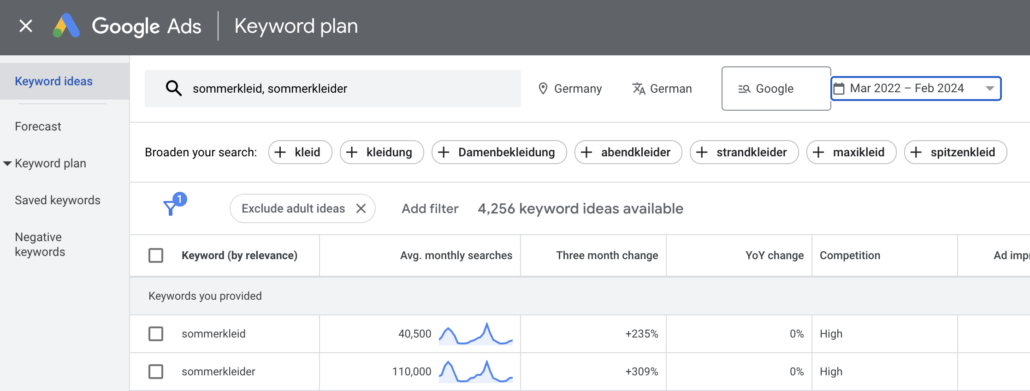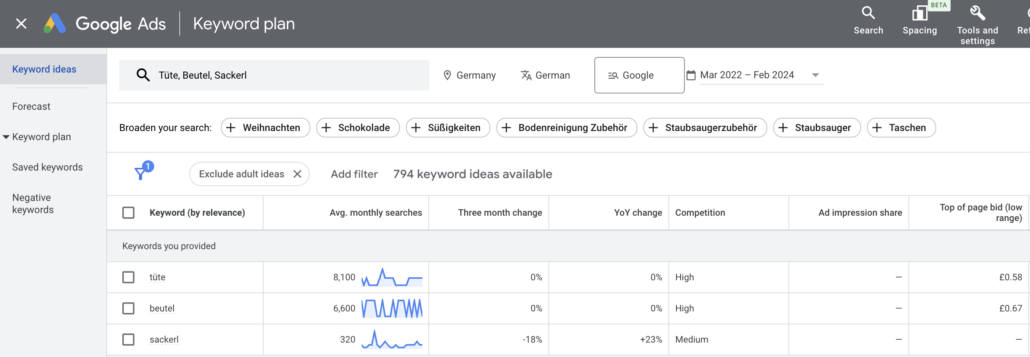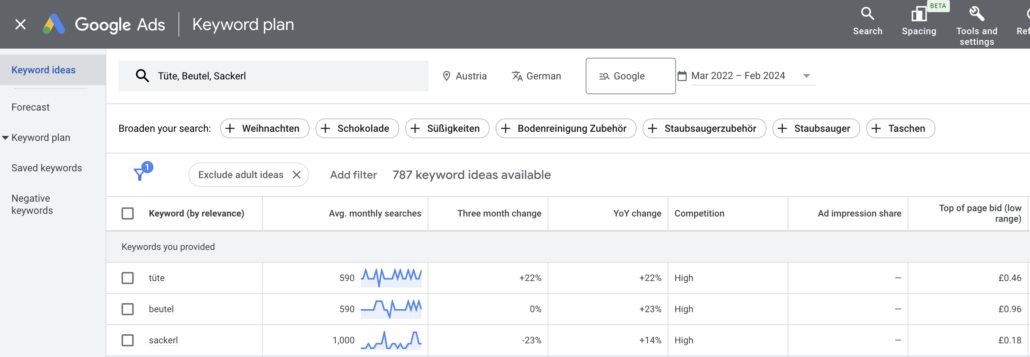SEO translation: What it is and why it matters
Translating your website to launch into a new market can be fraught with pitfalls. From phrases that don’t make sense in another culture to using the wrong formality or vocabulary by mistake, brands have to be rigorous to make the right first impression. But where does SEO translation fit into that checklist?
Translation can have a surprisingly large impact on a website’s performance in search engine rankings. People in different countries and cultures will search for the same products in very different ways, so translating your SEO keywords directly from English will rarely yield the same results.
That’s where SEO translation and multilingual keyword research comes in.
What is SEO translation?
SEO translation is the process of translating your website pages so they’re optimised for search in another culture and language.
It involves multilingual keyword research – analysing how new markets search for products or services like yours in their own language. It also requires the input of someone well-versed in the language and culture of both the original and the new target market.
The final translation won’t only reflect the original text, but also the search intent, culture and priorities of the user. So for brands that need to build visibility and customer trust from their first day in a new market, SEO translation is essential.
Why does quality translation matter for SEO?
The reason why SEO translation matters is basically the reason why SEO matters in general. If you want to get a prospective customer’s eyes on your website and your products, you need to know exactly what they’re searching for – and those answers will change depending on the language and market you’re targeting.
The challenge with SEO translation is that it’s not simple. There’s often far more nuance involved than using this word for X market and that word for Y market. For instance, when two countries share the same language, each will have its own dialect and idiosyncrasies that will have to be taken into account. Even the difference between singular and plural can make a huge impact on how people in different markets search for products.
Take the example below: In Germany, on average 40,500 people search for the singular term Sommerkleid (summer dress) every month, but 110,000 people – almost three times as many – search for the plural term Sommerkleider (summer dresses).

Regional variations are another factor to take into account. German, for example, is the official language of Germany and Austria, and one of the official languages of Switzerland. However, there are several distinct differences in vocabulary, grammar and spelling between standard, Austrian and Swiss German. An expert translator will find out if your Swiss and Austrian customers are searching for local variations of keywords or using standard German.
Subtle lexical differences can make a big difference in SEO translation. The below example illustrates the differences between Austria and Germany for the humble word bag.
In Germany, a bag is more often than not called a Beutel or Tüte:

In Austria, however, the more common word for bag is Sackerl:

Bearing these regional differences in mind and targeting each region with culturally appropriate vocabulary is crucial to capturing all relevant search traffic.
And then there’s the question of which keywords you might not need to translate at all. Knowing when to use English loan words is a key part of translation in general, especially in the beauty industry.
Whilst it’s not uncommon to see English words for beauty techniques such as ‘contouring’ or ‘scrunching’ woven into French creative content or read a few English words in a German beauty article, exactly how many loan words to use in SEO will be determined both by thorough multilingual keyword research and by a translator’s cultural knowledge and industry insight.
How to make SEO translation effective and affordable
Start with SEO translation, don’t fix a regular translation later
For many brands, their struggles with SEO translation start with a disconnect when it comes to how people think about internationalisation. Translation and SEO often get separated – a brand might say they want their website translated into Italian, for example, and only think about localising keywords later once they realise they’re not ranking where they should be.
The bottom line is that it costs so much more to do your international SEO that way round. You’ve already paid once for the translation of your site, and now you’re paying again for the multilingual keyword research and for your copy to be adjusted to include the new search terms.
And if your website has already gone live with poor SEO translation, you’ll be forced to play catch up to try and solve it. Google will have already placed your site lower in its search rankings, and it’s hard to change that impression of your site after the fact without the results looking clumsy. It can be a bit like realising you’ve missed out the eggs in a cake recipe and trying to mix them in once the batter is already in the oven.
Tie your SEO translation into the bigger brand strategy
While the goal of SEO translation is to make sure your website ranks where it should in every market, that’s not all it can be. When you’re thinking holistically about international SEO, it’s also an opportunity to reflect on where your website sits in the wider customer journey.
When we do multilingual keyword research for international SEO we can see how search intent differs between languages and cultures, and what kind of information people are looking for.
In Germany, for example, people tend to want more information than other European markets – they’re happier to do their research on a product and digest facts and figures before buying. This means your product pages might need more text and less emotion-led concepts.
When you start looking at your website and SEO translation in that way, you can see that it’s not just about driving more customers to your products. Knowing what people want to see on your site can inform your internationalisation strategy as a whole – from your product packaging to your marketing concepts.
Don’t compartmentalise the SEO translation process
The holy grail is to break down the silos between your copywriters, translators and SEO team and think about them much more holistically from the start. If you have a handle on which keywords and search terms you need to use for each market from the start, you’ll stand a much better chance of launching a site that not only ranks well in other languages but feels authentic to your customers as well.
This way, your website won’t be lovingly translated only to be mutated by hastily added SEO keywords that aren’t really part of your brand strategy. You’ll have the SEO, brand and translation working in harmony to build brand recognition and trust in a new market.
To find out more about how we can help with international SEO translation and multilingual keyword research, please do get in touch.
